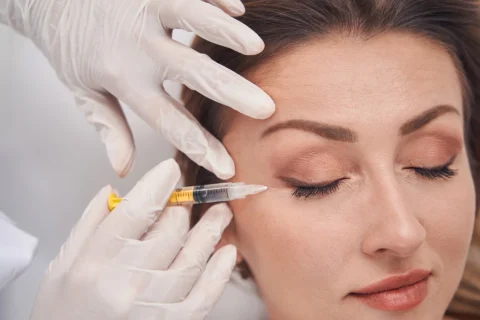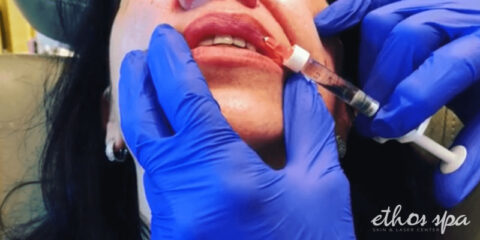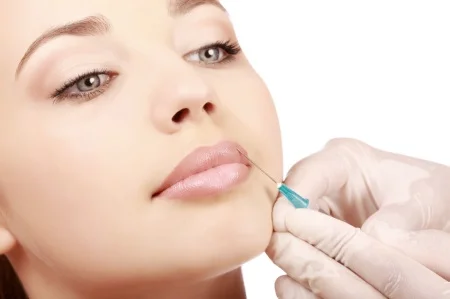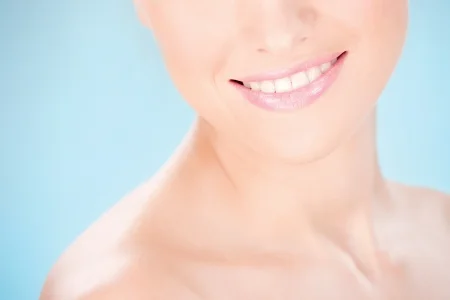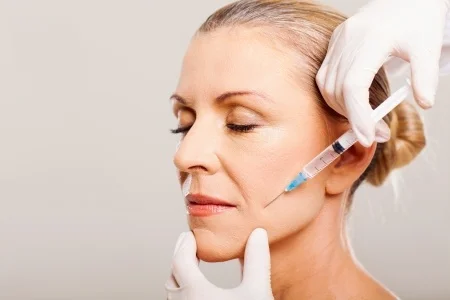One advantage of using dermal fillers is their fast results. On average, you can expect to see results a few hours or days after the treatment. But these results can vary from filler to filler, with some of them sacrificing the time you see results for efficacy like Restylane.
But how long does it take to see results from Restylane? Most patients may see visible results immediately after treatment, though it may take anywhere from one to two weeks for the best results.
How Much Time Does It Take For Restylane To Take Effect?
Most dermal fillers like Restylane are made with hyaluronic acid for immediate results. Depending on the amount of filler injected, you can see visible improvements to your injection sites after the procedure’s been finished, with full results within two weeks. Areas like the mouth, cheeks, or lips can have visible results even sooner.
Any bruising, discoloration and other blemishes will fade within a week, though there are factors that affect this recovery process. The crucial thing about Restylane is while the results themselves may be immediate, your body’s reaction to them might not be.
So dermatologists must set their patient’s expectations – because everyone’s skin can react differently to the hyaluronic acid, there’s every possibility that you may not see results at once. Depending on the filler areas and how much filler they actually need, full results may take longer than expected.
How Does Restylane Work?
Hyaluronic acid is a naturally occurring compound found in your skin, and it’s responsible for keeping your skin well-hydrated. It keeps water so your skin remains supple and smooth, also acting as a lubricant and cushion for your body’s joints and tissues. It also helps add more volume to your face.
Over time, your body’s reserves of hyaluronic acid deplete. Age is a major factor but lifestyle and diet also play a huge role. Dermal fillers like Restylane inject more reserves of hyaluronic acid under your skin, which fill out any wrinkles and fine lines
Depending on the treatment area, you can use different Restylane treatments:
| Restylane or Restylane-L | The original formulas. Restylane-L includes lidocaine, a numbing agent that makes injections less painful for patients. | Lasts up to 18 months |
| Restylane Silk | Formulated for delicate areas like the lips and mouth, Restylane Silk is also used for micro sculpting facial contours and adding more volume. | Lasts up to 6 months |
| Restylane Lyft | Restylane Lyft is a special formulation that’s used for areas that need a lot of filler volume, like nasolabial folds, cheeks and other sites in the middle of the face. | Lasts up to 10 months |
| Restylane Defyne and Restylane Refyne | Made with XpresHAn technology, these fillers are more flexible and move with your facial muscles more naturally. | Lasts for up to 12-16 months |
Most Restylane treatments will last for one to two sessions, though the exact number of treatments will depend on the filler area itself. Your dermatologist may also request that you report back for follow-up sessions for the best results.
Follow-up treatments will last for up to 4 to 9 months after your last Restylane session, depending on which type of filler was used. Treatments like Restylane Silk will require regular follow-up treatments since the injection sites (particularly the lips) move around so much.
Factors That Can Affect Restylane Results
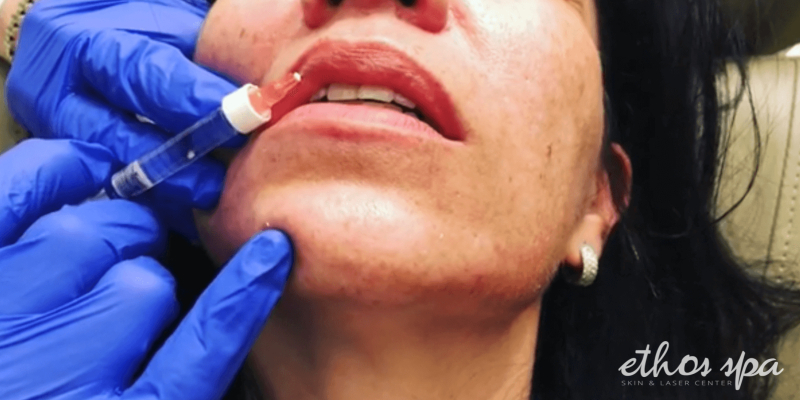
While Restylane is a safe and efficient dermal filler, there are other procedures and changes that can drastically affect the results that you can get.
1. Botox and other dermal filler products
Botox is one of the most popular cosmetic enhancements done by dermatologists, and it’s no surprise that it also pairs well with Restylane. Sometimes the filler areas also need wrinkle and line management, and it’s not uncommon for dermatologists to pair Botox treatments with Restylane fillers.
Since Botox works by freezing the muscles to reduce wrinkles, Restylane complements it well by allowing the muscles to regain their suppleness and texture. Most dermatologists will recommend applications of Botox in between Restylane treatments for a more defined lifting of certain areas, or to improve the eventual results overall. This is particularly useful with areas like the cheeks or mouth, since their frequent movement can decrease Restylane’s efficacy and overall volume.
One thing to keep in mind is that additional treatments will mean that you’re more likely to experience more short-term pain and side effects from having so many procedures done. Your dermatologist can attempt to reduce these incidences by adjusting your treatment schedule or using tools like blunt-tip cannulas, but you’re still putting your skin under a lot of strain.
If you experience a lot of swelling around the nose and mouth after Restylane, it’s advised that you wait at least two to three weeks to have your skin heal.
2. Microneedling and laser surgery
Two more skin treatment options that can be combined with Restylane treatment are micro-needling and laser surgery. While it may seem unwise to have such intense procedures right after Restylane, it’s possible to combine procedures with a bit of time.
Microneedling boosts collagen production, which helps improve your skin health. Collagen aids in helping your body become more elastic while staying hydrated, improving its overall tone and texture while adding plenty of volume. This allows for a better skin rejuvenation routine, which makes your skin fill using both the dermal filler and its own production of collagen.
Laser surgery can help sculpt the face around the dermal filler, defining contours and clearing up uneven lines. Lasers do not have any discernible effect on filler material, so dermatologists can use them on Restylane sites with no risk of injury or harm. You can choose to have laser treatment before or after filler injection, though most dermatologists recommend that you do them after the filler treatment.
Areas like the nasolabial folds, cheeks, mouth, lips, and even the brow and forehead area can benefit from microneedling and laser surgery, as long as it’s applied after letting the skin heal. Otherwise, patients may see a decrease in the results from their initial filler treatment.
The key thing to keep in mind when doing these procedures is to allow at least two weeks of recovery time before each procedure, so you give your skin time to heal. Some aftereffects of these procedures like swelling or inflammation can disrupt the efficacy of the following procedure, aside from taxing the skin in recovery.
3. The skill of the dermatologist
Your dermatologist’s familiarity with dermal filler products is the biggest factor in how your Restylane treatment will turn out. In the hands of a skilled dermatologist, they can treat filler areas in as short as two sessions with few follow-up sessions for post-operative care.
However, while most dermatologists are trained for general cosmetic procedures, fewer have the skills necessary to evaluate the patient’s face and body anatomy for better dermal filler treatment. That’s why it’s crucial for patients to only have Restylane treatments with properly certified and trained dermatologists.
This is more crucial if their skin rejuvenation routine requires multiple filler injections or even combinations with other fillers like Botox or Juvederm. Proper and skilled application of these injectables is the key to getting the best results, alongside preventing any complications that may arise because of the treatments.
What To Do Before Getting Restylane
Most patients will need to undergo some post-operative aftercare to manage the usual side effects of Restylane treatments. However, there are two things you can do before getting the procedure that can help with your aftercare:
1. Antiviral therapy and medication
For people who are prone to cold sores and similar outbreaks, dermatologists will usually prescribe a preventative regimen of antiviral drugs before filler injections. This helps your immune system keep up with the strain of having fillers injected.
Your dermatologist may warn you to avoid certain medications before your procedure. These include:
- Aspirin
- Vitamin E supplements
- Advil
- Nuprin
- Clopidogrel
- Other NSAIDs
These substances will increase the likelihood of bruising and scarring after your procedure. If you have a condition that requires you to take any medication (maintenance or otherwise), consult with your dermatologist.
2. Getting a blood test
While most dermal filler treatments like Restylane do not require a blood test, it’s still advisable to get one, especially if you’re anemic, thrombocytopenic, or have any blood-related conditions that may be triggered by the dermal filler product.
Allergic reactions to Restylane are relatively uncommon, though a blood test may give your dermatologist a better idea of how your body will take the treatment. If you experience any unusual or severe side effects after the procedure unrelated to inflammation, consult your doctor immediately.
Before getting Restylane, it’s best to consult with your dermatologist about any concerns or questions that you may have pre or post-op. Since you’re expected to report for follow-up treatments and aftercare, your dermatologist can help you with your expectations and things you need to manage after your treatment.
Get Quality Skincare Solutions At Ethos Spa NJ Today
Like all dermal filler products, it’s possible to see immediate results when you use Restylane. However, dermatologists should set their patient’s expectations about how long it’ll take to integrate with the skin, the factors that can affect how long it lasts, and that they will need future injections to maintain the results.
Ethos Spa is one of the leading providers of dermal filler treatments and other skincare improvements in New Jersey. Our staff is highly trained in the application, aftercare, and re-application of dermal filler products, helping our patients achieve the look that they want.
For more information about our services, schedule an appointment with us today.
Read more: How Does Sculptra Help HIV Patients?


